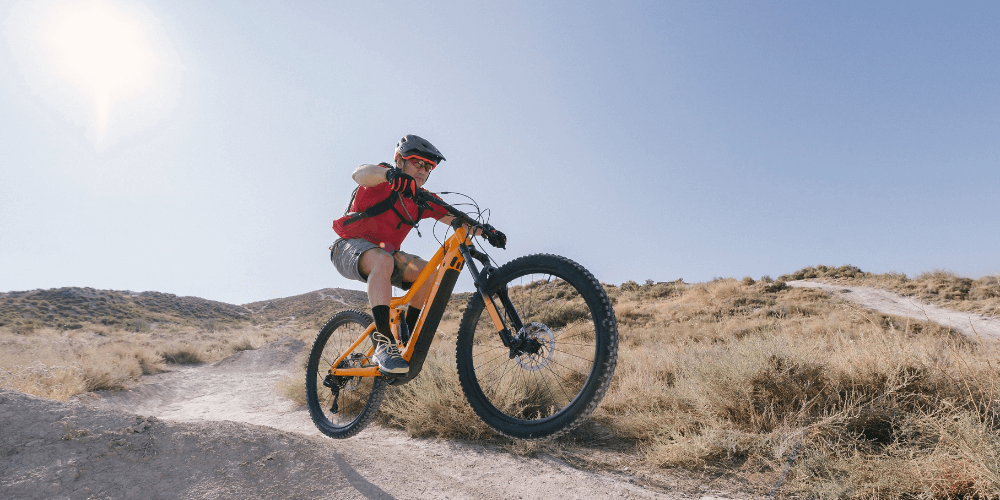An e-bike, often referred to as an electric bike, is a bicycle with an electric motor to help the user pedal. Commuters frequently choose e-bikes because they may assist in making the trip to work or school faster and more straightforward, especially if the route involves hills or other challenging terrains.
As they emit no emissions and use less energy to function, e-bikes can also be a more ecologically responsible alternative than driving a car or using a public transit system. High-capacity batteries, strong motors that can boost power when needed, and sophisticated control systems that let the rider change the motor's amount of assistance are just a few examples of cutting-edge technology found in e-bikes.
Eco-Friendly Way to Commute
Compared to gasoline-powered cars, commuting on an e-bike can be more environmentally beneficial. Electricity, which powers e-bikes and can be produced using sustainable energy sources like solar or wind power, has no emissions. In contrast, the greenhouse gases and other pollutants released by gasoline-powered automobiles are significant factors in air pollution and climate change.
The California Ebike provides commuters with other benefits in addition to environmental ones. Some routes may be quicker than conventional bikes, and they may also make it simpler to navigate hills or headwinds. As they can be stored at bike racks or brought inside with you and don't need a specific license to use, e-bikes can also be more practical than public transit.
Depending on the brand and model, e-bikes come with many features. Typical characteristics include:
Electric Motor
An electric motor that aids in forward motion is a feature of e-bikes. Typically, the motor is situated around the bicycle frame's bottom bracket or in the back wheel's hub. The motor's output is generally measured in watts. Some electric bikes additionally have a mid-drive motor in the middle of the vehicle, which may transfer power to the drivetrain more effectively.
Battery
Batteries power electric motors on e-bikes. Usually found on the bike's frame, the battery may be removed or built right into the frame. The battery's capacity is expressed in watt-hours (Wh). The battery size, motor output, and rider weight are a few variables that will affect the e-range or how far it can go on a single charge.
Display and Control Panel
Many electric bikes have a display that tells the user things like speed, battery life, and aid level (if the e-bike has multiple levels of assist). A primary LED display or a more sophisticated LCD with extra capabilities like networking and navigation can be found on the handlebars or the bike's frame display.
Pedal Assist and Throttle
Some e-bikes have a sensor that detects when the user is pedaling and adjusts the electric motor's amount of assistance accordingly. A throttle on specific e-bikes, like those on motorized scooters or motorcycles, enables the user to regulate the electric engine without pedaling. This might be helpful when you need an extra power boost or to restart from a halted position.
Suspension and Lights
Many e-bikes incorporate suspension parts to assist the ride over rough terrain that seems more comfortable. This could involve a suspension seat post or a fork on the front wheel. For better visibility when riding at night or in dim light, e-bikes may be fitted with lights. A headlamp, taillight, and reflective components on the bike frame or wheels can all be considered.
Fenders, Rack and a Kickstand
Fenders usually referred to as mudguards can shield the rider and the bike from sprays of mud and water. For transporting items like groceries or a backpack, a rack on the front or back of the bike might be helpful. The bike may be stood upright without resting against a wall or other object thanks to a kickstand.
E-bikes also have a wide range of additional characteristics, such as different kinds of brakes, gears, and tires. Some e-bikes include features like knobby tires or a strong frame that make them suitable for carrying large loads or riding off-road.
Bonus Read
In addition to the features listed above, some e-bikes also come with additional "bonus" features that can enhance the rider's experience.
- Regenerative braking
- Geofencing
- Removable battery
- Weather protection
- GPS tracking
Overall, the specific features that are helpful will depend on the individual rider's needs and preferences. It's a good idea to consider the essential features and look for an e-bike that offers them.


